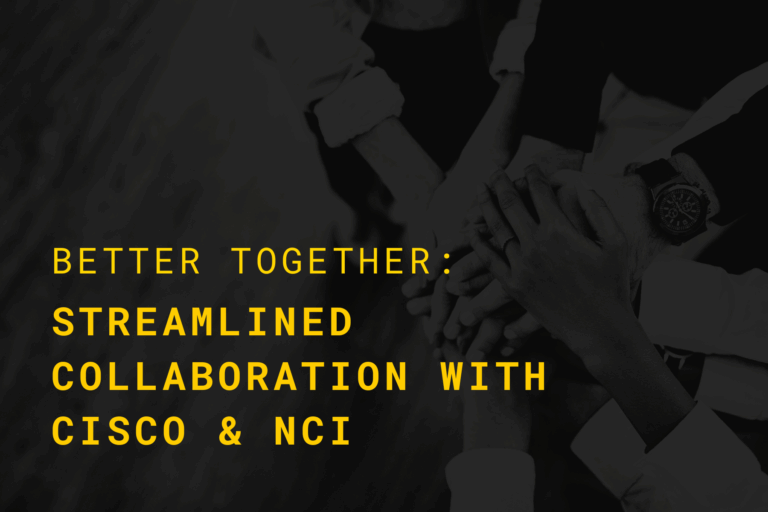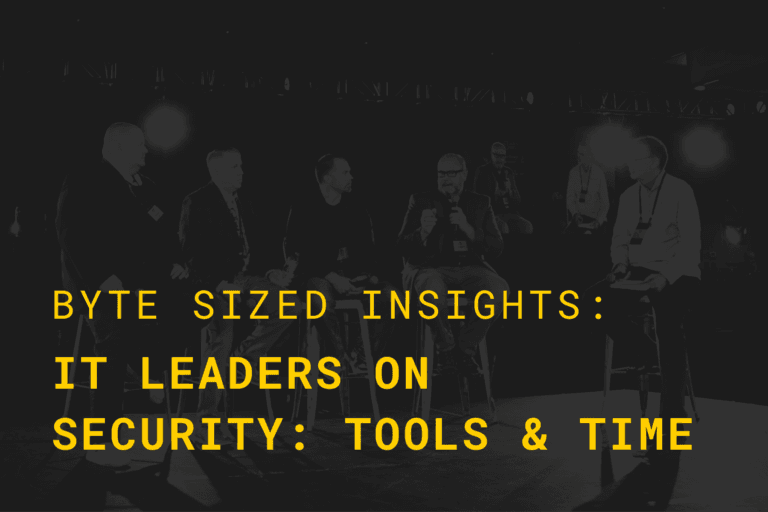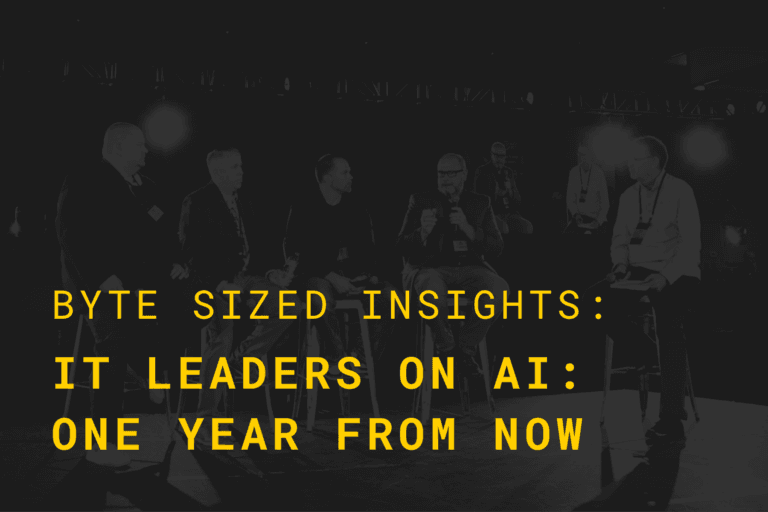We gathered IT leaders to discuss two major topics: AI and security. In this blog series, our panelists, each with unique industry backgrounds and strategies, will share their insights on today’s top of mind questions.
Jump to meet our panelists section.
Don’t miss the first blog in our byte sized insights series!
- Byte Sized Insights: IT Leaders on AI Adoption: 1 to 100
- Byte Sized Insights: IT Leaders on AI Limitations Guardrails & Knowledge Gaps
How fearful, or concerned, are you with not knowing if your staff is trying to do something with AI—whether that be with your corporate data or not?
Jason:
Yeah, I don’t sleep very well at night. (I’m just kidding.) It is a concern, but honestly all we can do is educate our end users, back it with policy, and do routine checks. Everybody’s trying to figure it out at the same time: trying to improve business processes, create efficiencies and automation, not to mention trying to figure out how to use it in their personal lives. So, on one hand, I want to encourage people to try and figure it out and use it but just use the right data. Do not use anything and everything. There’s data that should be used, and data that shouldn’t—learn the difference between the two.
Jon:
I would say AI is probably as good and healthy as the person behind the keyboard. I think we should trust but verify all folks within our organization, continuing the communication and conversations of understanding what data we have out there, what can be accessed with AI (what could be exposed,) and being transparent with those folks.
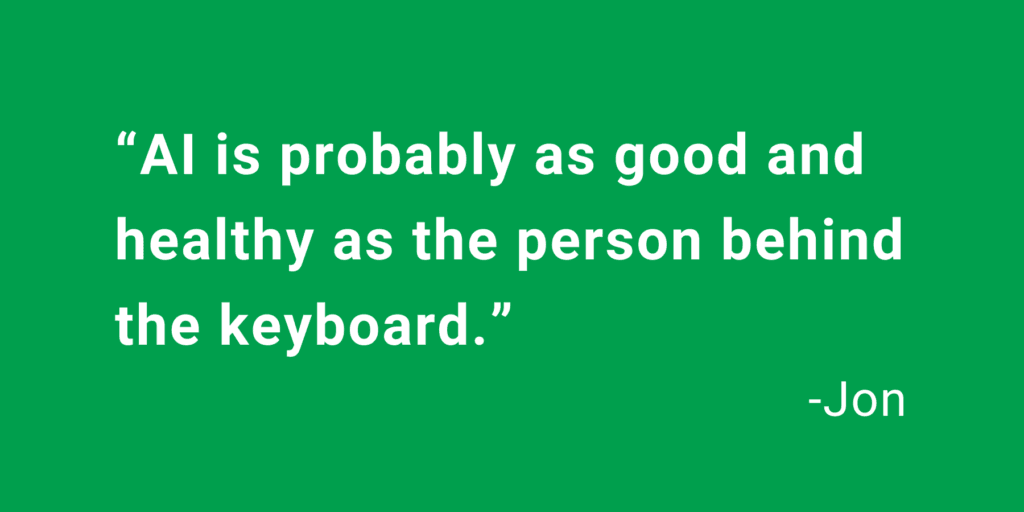
Joel:
For us, it’s about training those end users and backing it up with policy. I like to think we have a pretty responsible user base. Obviously, if somebody’s doing something on their personal device, there’s only so much we can look after, so it’s about educating end users just like with everything else.
Jay:
You can set it up so AI can access your shared file (One Drive, etc.). If you’re putting all your data in that file, it’s free reign. You have to set boundaries and be able to lock certain data so it’s “off limits” to AI. I think the biggest problem is we keep collecting years and years of data out on servers, and it continues to exist without parameters. You must have security controls in place to lock down that data. Your team must have the ability to flip a switch and make certain data inaccessible, so no applications can see it. If you don’t do that, somebody could do a search, for example, payroll tax records from your CEO, and they’ll find it. So, classify your data from day one, even if the data is sitting at rest in backup storage. You need to make sure you have all the security controls in place to protect it, then you’re closer to deploying AI successfully. And if you don’t have it in place, don’t even attempt to leverage AI until you know where data lives, and how to secure it.
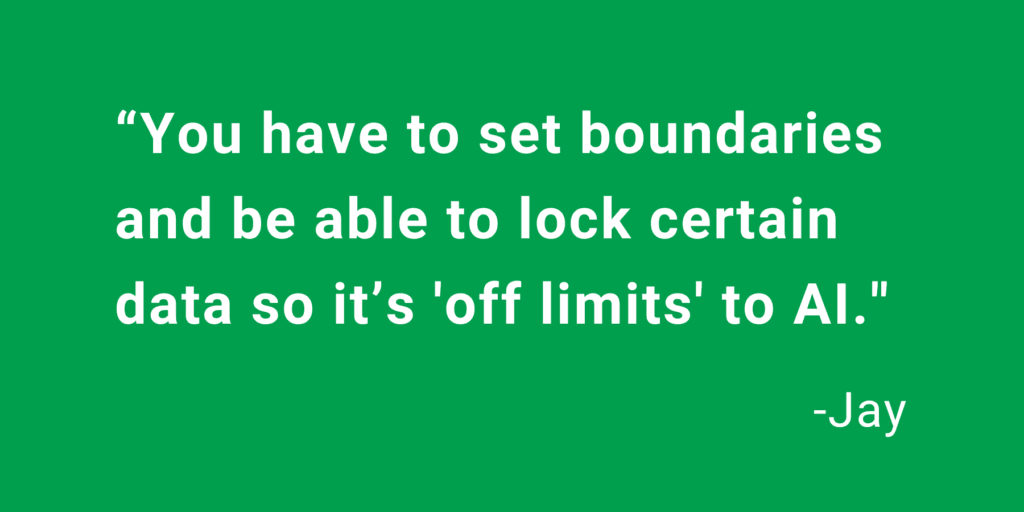
Jason:
I’ll reiterate data classification is a big thing – you really need to know your data. and that can be a very intensive operation, so if you haven’t already, I would start now. After your data is classified and tagged, you can put it through automation and controls to prevent it from getting outside the organization.
Do you have user groups or departments that are asking to use AI, and you’re saying, ‘not right now’? Are there any groups that surprised you and you thought ‘why are they asking about it’?
Joel:
Actually, our manufacturing operations are chomping at the bit, but it’s primarily an understanding question at this point in time. They hear “AI,” and they think “Well we can use it for this and that,” and there’s kind of a lack of understanding on what the application is. There is a desire amongst our least savvy users to use it as quickly as possible for critical tasks that use data sets, we have to parse through on a regular basis like production scheduling. So, the answer we’ve given them thus far has been “we’ll see what’s available in the future,” and “we’ll see where we can integrate it.” But my goal is to only use technology to enhance our processes. We are not interested in being on the bleeding edge of technology. We’re interested in being on the bleeding edge of manufacturing quality windows and doors. And we’re going to use technology to enhance that where we can. But let’s take good processes today and see if we can use AI or other technologies to help bolster those.
Jason:
We formed a Digital Innovations Committee, with an AI-specific focus. We made it a requirement to go through the committee if they had any requests to use AI with company data, and we have not received any to date.
Jay:
There are departments in banks that I would like to see use it more, and they just won’t. Compliance is the main one: I think it would make life a whole lot easier for compliance departments if we can figure out how to make it work. I haven’t seen or heard other departments wanting to try it except for marketing.
Follow along in this series as we dive into more questions from today’s IT leaders. Want the rest of your Q&A insights right away? Watch the 45-minute panel recording on demand now.
Curious about AI for your organization? Start a conversation with our team today.
Interested in attending nVision?
Save your free seat today and join us for our biggest event of the year!
Meet our Panelists:
Joel Weber has been with Vector Windows, of Fergus Falls, for about 12 years. He currently leads technology, cyber security, and physical security operations. Vector Windows has between 100 to 160 end users.
Jason LeZalla has been with Microbiologics, Inc. for 2 ½ years and is the IT operations manager. They have 270 users, and 500 computing devices due to the science equipment and all the instrumentation they have.
Jon Artz is with KLJ Solutions Holding Co, a civil engineering company of about 600, and is spread across 26 different offices.
Jay Tambornino is with the Minnesota Bankers Association (MBA Consulting Group). They have 17 employees in their office and advocate on behalf of banks in Minnesota.

